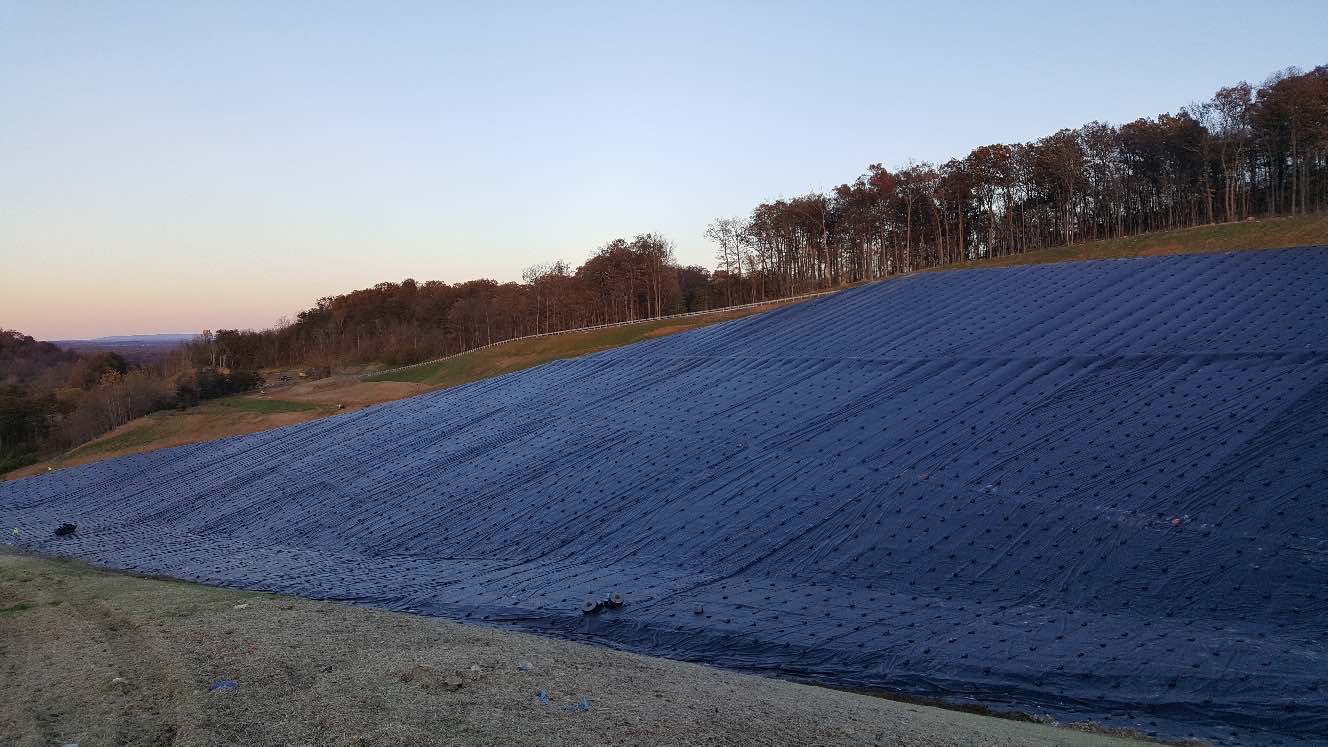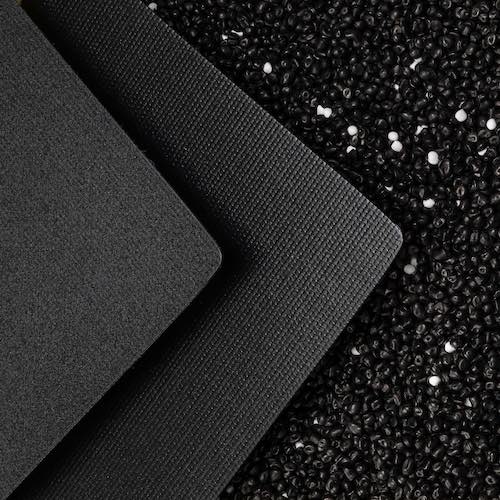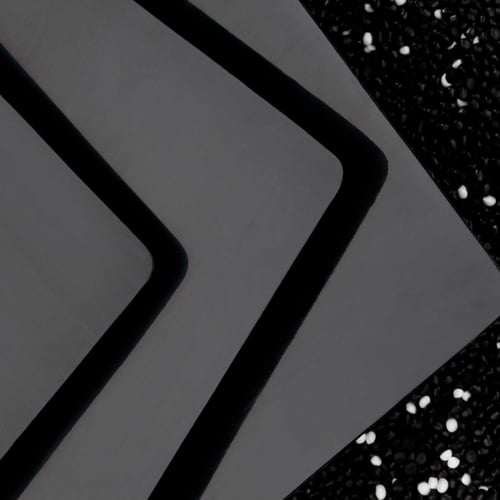Presently, the main issue regarding PFAS contamination within the geosynthetics industry is identifying the best types of materials for containment. In many cases, PFAS contaminated soils are being contained on-site by using rain-shedding techniques employed elsewhere in the pollution mitigation industry. By installing a geosynthetic barrier over the PFAS contaminated soils, also known as “capping”, precipitation is kept from infiltrating and percolating through the area. This protection keeps the water-soluble PFAS from migrating via percolating precipitation offsite, effectively capturing it in-place. Determining how PFAS will interact with the geomembranes and geosynthetic composite barriers used in these techniques is of utmost importance to ensure PFAS will not penetrate through and continue to contaminate into the future.
Current PFAS Study
A continuing study titled “PFOA and PFOS Diffusion through LLDPE and LLDPE Coextruded with EVOH at 22℃, 35℃, and 50℃” is being conducted at Queen’s University in Kingston, Ontario, Canada. The most recent paper in the study is linked below and is authored by V. Di Battista, R. Kerry Rowe, D. Patch, and K. Weber.
This study has been ongoing for two years, and is looking at the permeation rate, also known as hydraulic conductivity, of PFAS through two types of geomembranes. The chosen geomembranes for this study are Low Linear Density Polyethylene (LLDPE) and a multi-layer geomembrane comprised of LLDPE coextruded with ethyl vinyl alcohol (CoEx).
Variables in PFAS Containment Testing
Multiple thicknesses of each membrane type were examined to see if this impacted penetration. Various temperatures were employed, especially pairing thinner membrane samples with slightly higher temperatures to simulate real world exposure. The two types of PFASs employed in this study were Perfluorohexane Sulfonic Acid – CAS Number 355-46-4 and Perfluorooctanoic acid – CAS Number: 335-67-1. These agents were chosen with the thought that they most closely represent PFAS contaminants currently found in the environment. Last, the concentrations of PFAS itself vary from 20-30 parts per million, to 60 parts per million, respectively.
Results
This study compared the permeation of PFAS through both the LLDPE and CoEx materials described above. The overall results showed the CoEx material better contained the contaminants up to two orders of magnitude when compared with the standard LLDPE. This was the result when the materials were at normal temperatures (see links below for exact numerical data).
In addition, increased polyethylene density correlated with both improved chemical resistance, and permeability. This bodes well for many engineered and lined landfills, as part of their geosynthetic composite barrier systems usually include High Density Polyethylene (HDPE). HDPE geomembrane liner proves to have more density than its brother LLDPE. Keeping this in mind, the results of this study can be extrapolated to indicate that HDPE barriers are a better combatant than LLDPE to permeation by PFAS type substances.
Conclusions
This study successfully enumerated permeation coefficients for LLDPE and CoEx when exposed to the specified types of PFAS contaminants. Engineers will now be able to use this new data to extrapolate permeation rates of PFASs through these geomembranes. This will allow them to better specify geosynthetic composite barrier systems that will successfully contain and combat the amount of these chemicals in the environment. Testing on these geomembranes in relation to PFAS is still ongoing. You can count on ICS to keep you informed on new developments in the fight against toxic contaminants in our environment.
- PFOA and PFOS Diffusion through LLDPE and LLDPE Coextruded with EVOH at 22℃, 35℃, and 50℃
- Containment of PFAS Type Materials with Geomembranes by Boyd Ramsay






